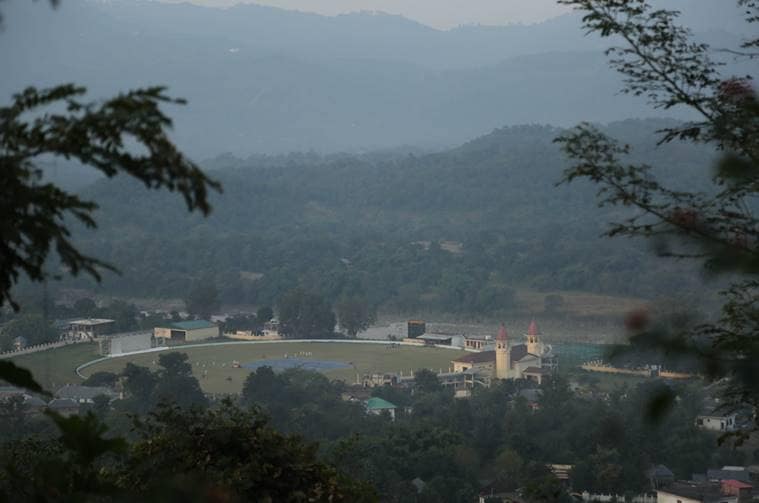 The Atal Bihari Vajpayee Stadium in Nadaun, Hamirpur, will host the Himachal vs Bengal match, its first First-Class game. (Express Photo by Jaipal Singh)
The Atal Bihari Vajpayee Stadium in Nadaun, Hamirpur, will host the Himachal vs Bengal match, its first First-Class game. (Express Photo by Jaipal Singh)
As Indian cricket embraces mofussil towns across the country, The Indian Express will bring to you, ahead of each Ranji Trophy round, the sights and sounds of these new frontiers
From the gilded galleries of urbane sporting complexes, the Ranji Trophy will tread a less trodden country road this season, through landscapes bewilderingly beautiful and enchantingly rustic, offering backdrops ranging from the Himalayas and the Beas to the Indian Ocean and the Arabian Sea. As many as five venues will enter the first-class sheets for the first time, two others will make a comeback after lengthy interludes, each so distinct in their visual and aural charm that you could say the soul of India’s premier domestic tournament this edition dwells in the anonymity of the outliers. An assortment of wannabe cities, laid-back towns and sleepy villages, connecting the blurred dots of a cricketing empire.
Take for instance Nadaun, a speck on the Shimla-Dharamshala highway, where Bengal meets Himachal Pradesh in their Ranji opener. It supports three banks, a couple of functional ATMs, two rundown hotels, a get-it-all shopping complex, a freshly-painted post office, a two-room hospital and countless memorial stones for its martyrs. The market, adjoining the bus-stand is peaceful, the vendors calm and patient, sipping tea and stretching the limbs to wade off sleep. It’s neither a tourist haunt or a stop-over spot, just another indistinct small town on a long drive — neither Shimla nor Dharamshala.
Two kilometres from Nadaun, curled off the Shimla-Jwalaji highway, more of a tarred tapestry, is the Atal Bihari Vajpayee Stadium. A sinuous, narrow road — so narrow that the bushes brush your windows as you pass oncoming cars — takes you past a raft of schools and tailor shops to the stadium in Bela village. The only signpost in the vicinity reads: “Home-made fish pickles.” Then you notice the pagoda-shaped roofs of the stands. Rather skinny pagodas that resemble cathedrals, more so with the sombre cream paint and red-brick linings, than a miniature of the HPCA stadium in Dharamshala it was originally designed to be.
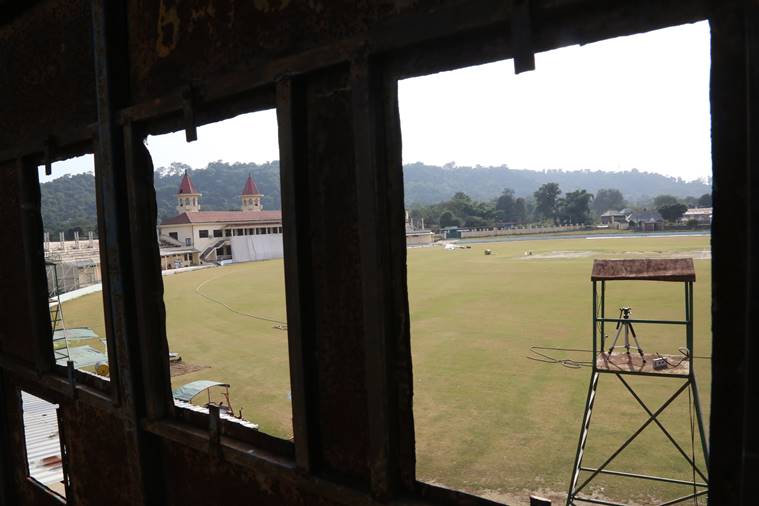 The half-constructed stands offer the most spectacular view of the stadium. (Express Photo by Jaipal Singh)
The half-constructed stands offer the most spectacular view of the stadium. (Express Photo by Jaipal Singh)
The half-constructed stands offer the most spectacular view of the stadium — a sparkling white structure in the Kangra ranges, which is the dilapidated Nadaun fort, a Kali temple almost hugging the boundary ropes, a primary school beyond it, endless canopies of deodars, and if you stretch your neck the contours of the narrow Beas swerving around the banks, before abruptly transforming into a water-monster, where a bunch of kids are rafting on an inflatable catamaran. There’s a better view of the river from the practice nets — a couple of Bengal players, after their practice, gazed meditatively into the muddy, still waters, listening to the humming gurgle.
Plop! That sinking feeling
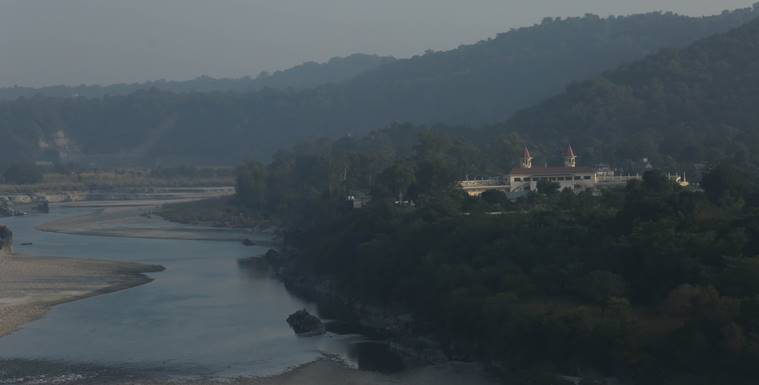 The square-boundaries are quite small, a hefty pull is all it takes for the leather ball to plunge headlong into the river. (Express Photo by Jaipal Singh)
The square-boundaries are quite small, a hefty pull is all it takes for the leather ball to plunge headlong into the river. (Express Photo by Jaipal Singh)
If it’s the proximity of the river that lends the ground a surreal beauty, it gives headaches to the ground-staff, especially if it’s a limited-over match. The square-boundaries are quite small, a hefty pull is all it takes for the leather ball to plunge headlong into the river.
“Usually, we employ more ball boys next to that fence during one-day matches,” says ground-staff Vikram Singh, who though asserts that such an eventuality has been rare. “We are more worried about the ball crashing into the temple into the other side,” he adds.
The belief here is that the deity dates back to the bitter Nadaun war between the Mughals and the Bilaspur royal family fought in the 17th century. Another vestige of the war is the Gobind Singh gurudwara, a few miles off the stadium, where the Sikh ruler, an ally of the Bilaspur king, built a shrine.
But guardsman Dilbagh Singh remembers a match (Nadaun has hosted 20-odd List A matches) wherein the ball fell into the river half a dozen times.
“It was a match against Delhi and Shikhar Dhawan was hitting every bowler out of park. Almost every six went into the Beas,” he says excitedly. Maybe his memory is playing a trick, or maybe it is just a hearsay exaggerated in every recounting, for Dhawan struck just a six in the match. But unleash a no-holds-barred aggressor into the middle, such an eventuality is not unfathomable.
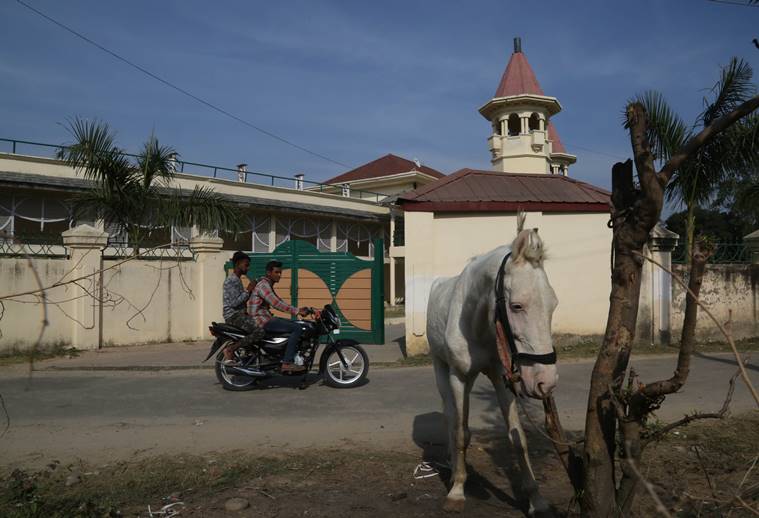 There are so many ponies grazing around that a couple of them drifting in is not improbable. (Express Photo by Jaipal Singh)
There are so many ponies grazing around that a couple of them drifting in is not improbable. (Express Photo by Jaipal Singh)
Dilbagh then begins to brandish his lathi at a herd of ponies casually drifting into stadium. “Ponies, these are the biggest mess. They destroy the garden in a minute,” he says, before, shooting an afterthought, “And the monkeys. The other day, one stole my cap. Thank God it wasn’t the gun,” he says. It’s the same worry that preoccupies most of the shopkeepers, from leaving the shop open to watch the match, unless it starts to rain sixes and fours, so that they can shut the shop altogether.
It’s exactly what local curator Sanjay Thakur dreads.
“I’m hoping for a result wicket, with something in for everybody,” he says. The latter bit of his wish can be disputed. For, he’s a self-anointed disciple of Jasmeir Singh, the curator of Lalhi’s green carpets, and he himself was a fast bowler in his playing days.
Thakur is nervously excited about the venue’s first-class debut. Nervous because an ordinary pitch could destroy the ground’s reputation straightaway, and excited because the ground is more than just a ground for him. He stays barely a hundred metres from the stadium, and before the HPCA acquired the land and built a stadium, it’s where he and his friends used to play kabbadi and volleyball and while away their evenings and holidays.
“The feeling I have now is something I can’t express in words. It will be a very emotional moment for me,” he says.
Several miles away, in diverse geographic and demographic zones, local curators, the stadium-neighbourhood and cricket enthusiasts would be passing through similar emotions, as Indian cricket embraces its outliers.
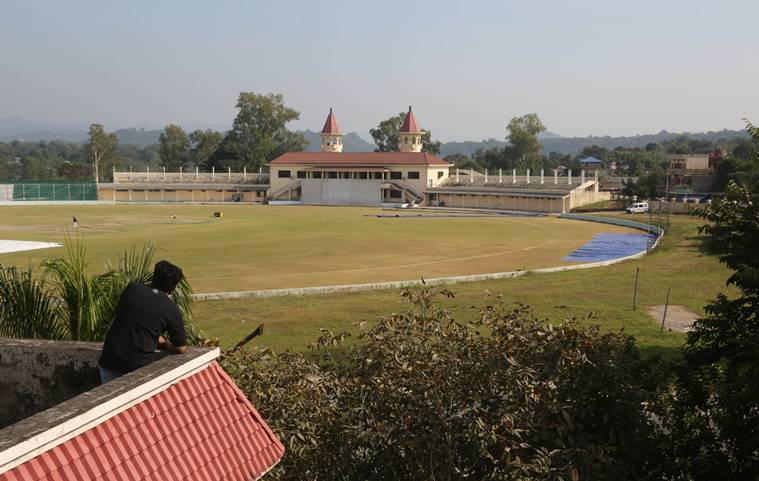 Nadaun cricket stadium in Himachal Pradesh on the bank of Beas river. (Express Photo by Jaipal Singh)
Nadaun cricket stadium in Himachal Pradesh on the bank of Beas river. (Express Photo by Jaipal Singh)
Capacity: Officially 5000. Practically, with so many vantage points around, infinite
How to reach: Get down at Nadaun, take right from Post Office and walk for nearly one and a half kilometres.
Out of bounds: The boundaries are not too long. The square ones must be around 55m and the straights 60m. So the possibility of ball being lost lurks in every corner. Must consider introducing the gully cricket rule: lose the ball, lose your wicket
Cow Pony corner: There are so many ponies grazing around that a couple of them drifting in is not improbable